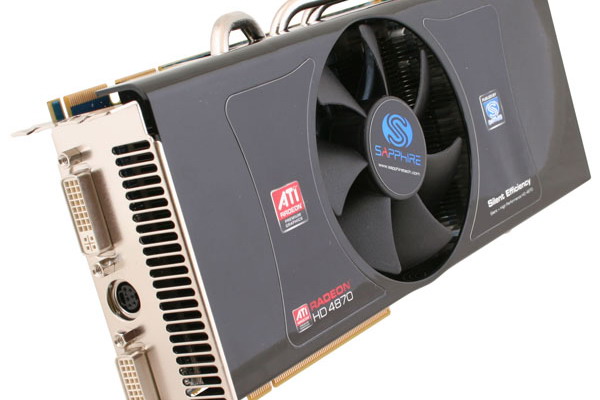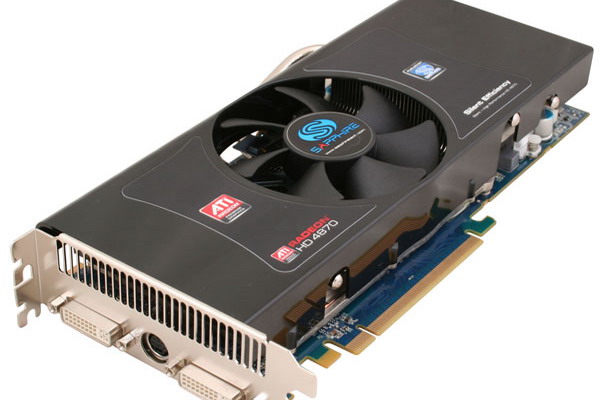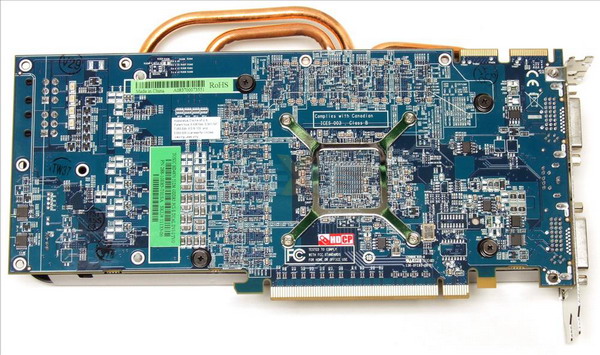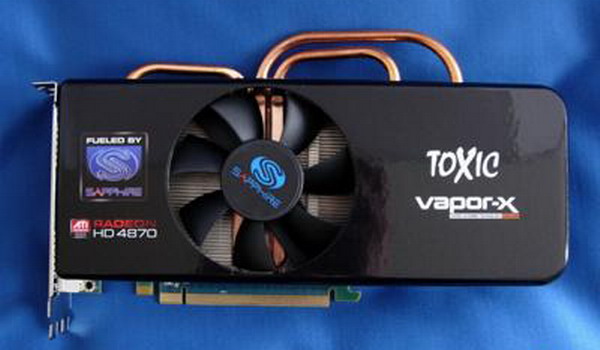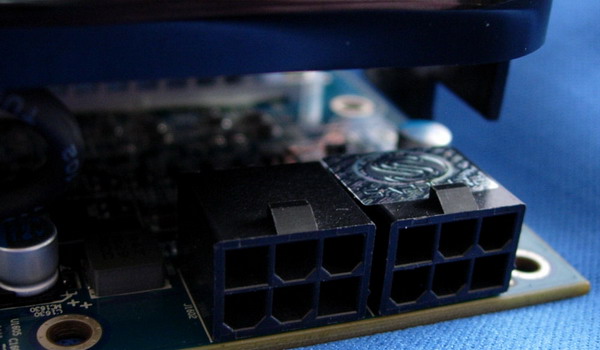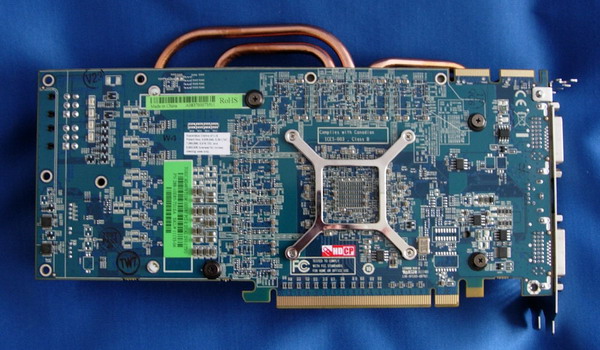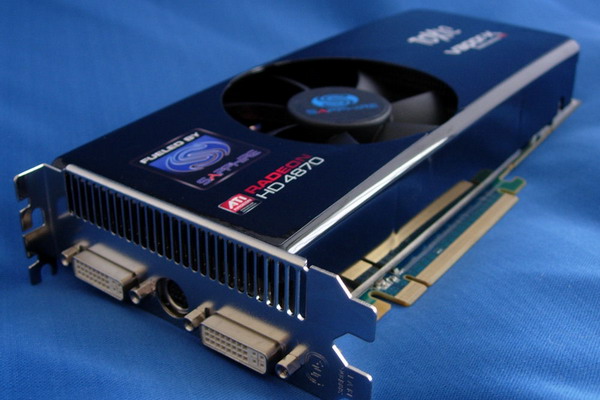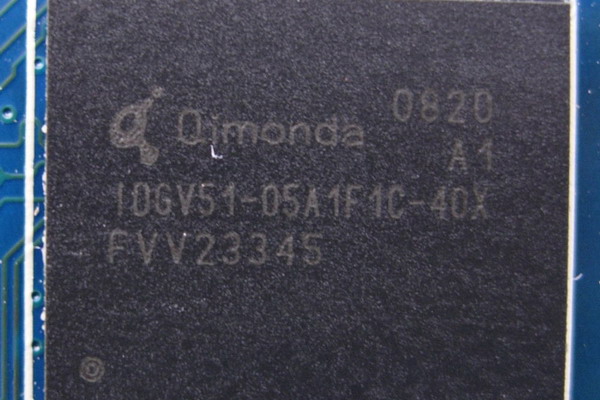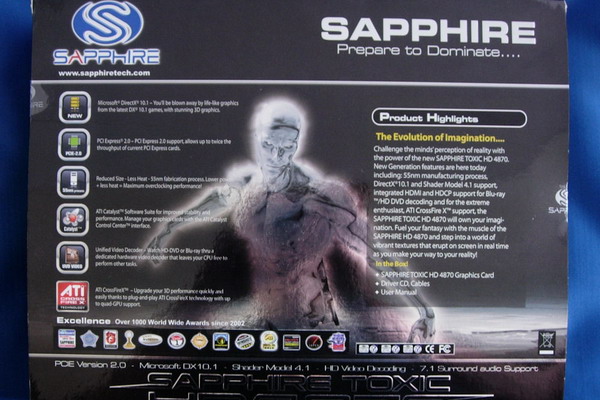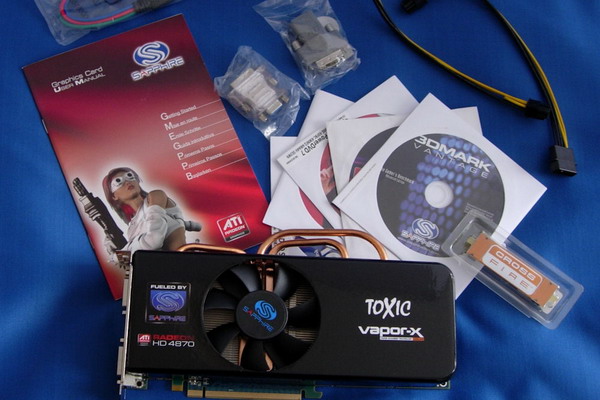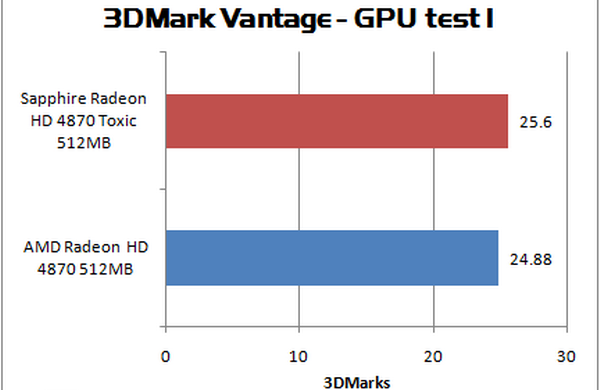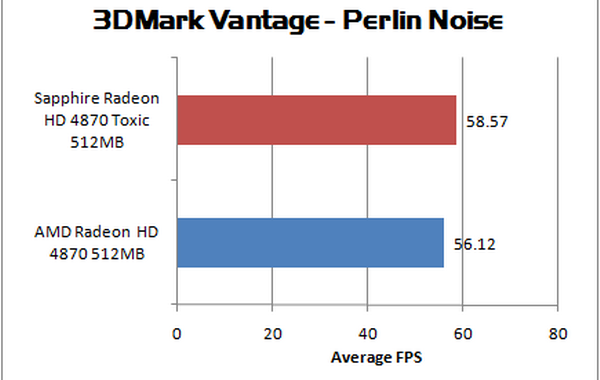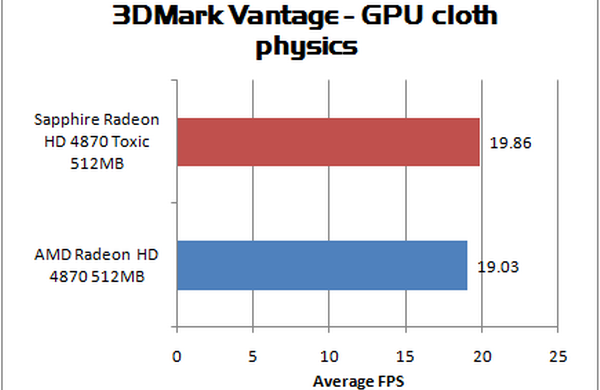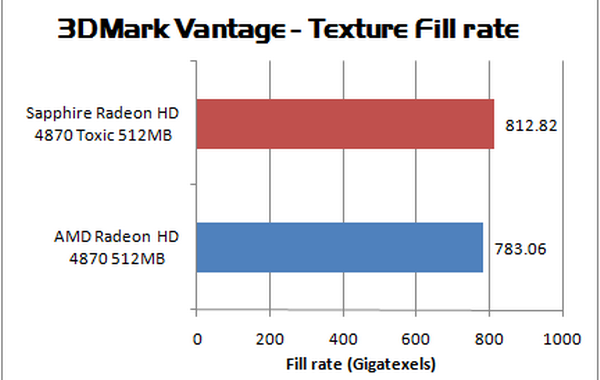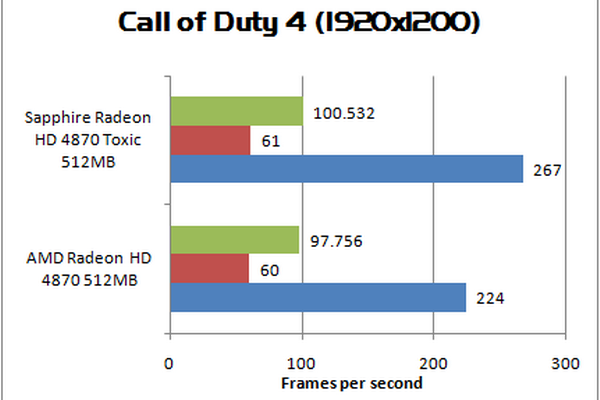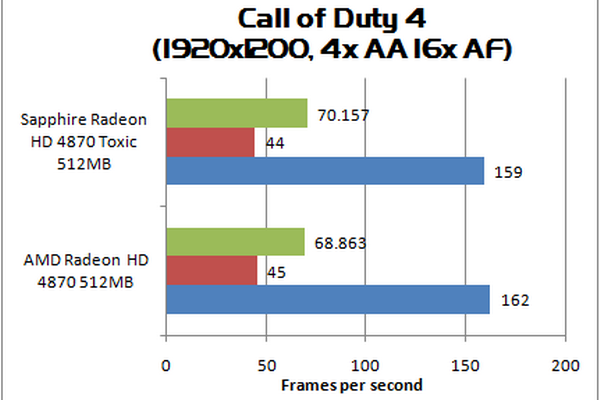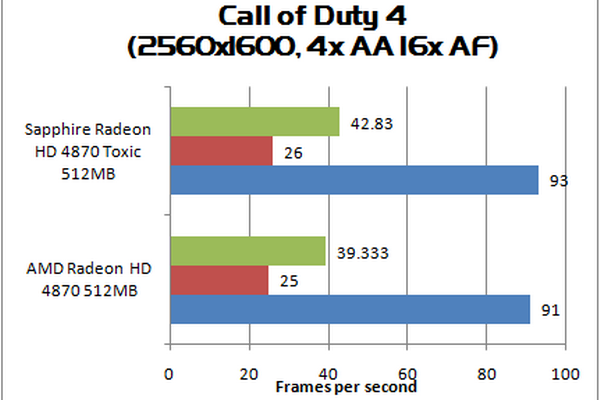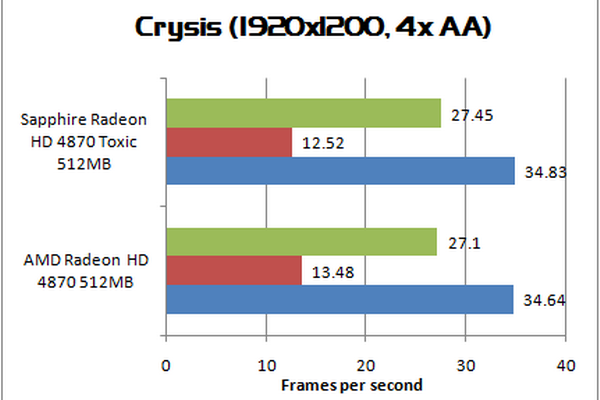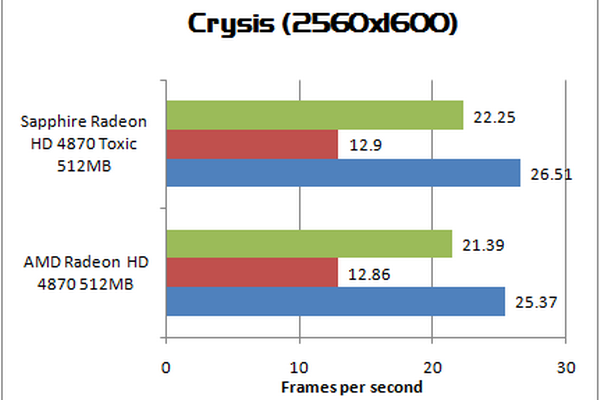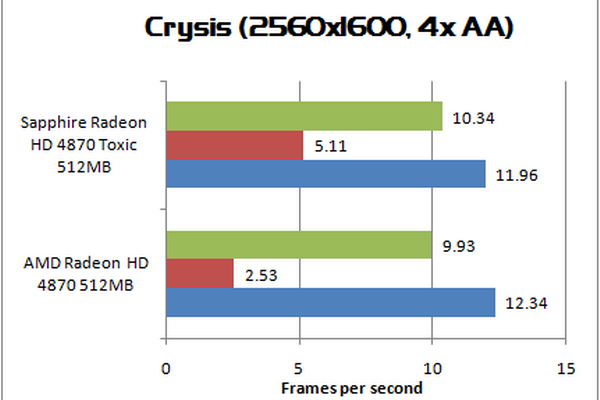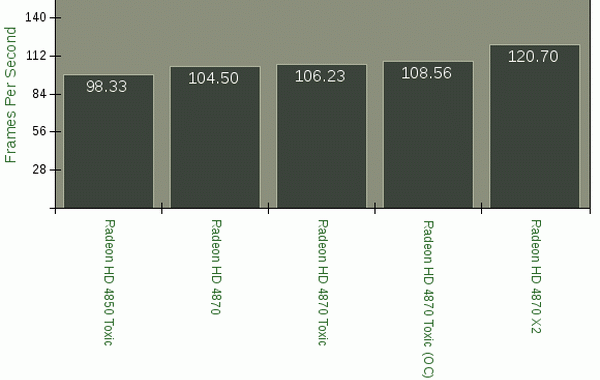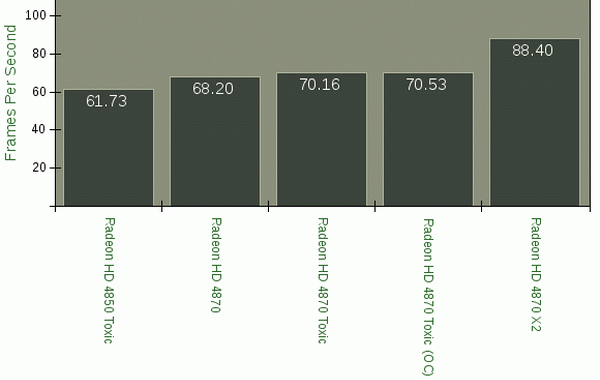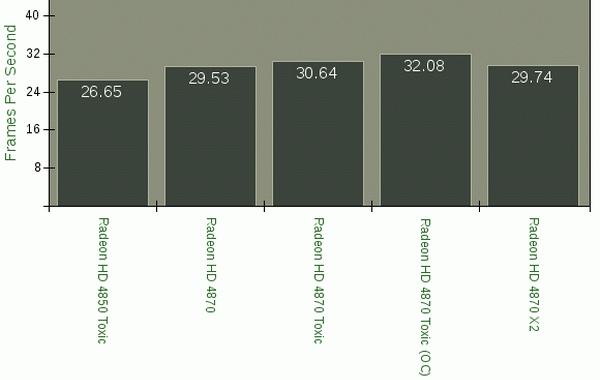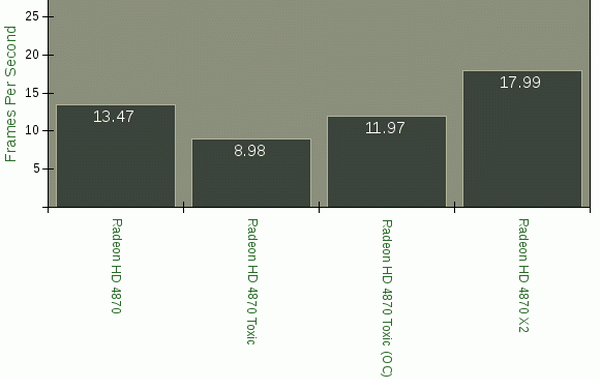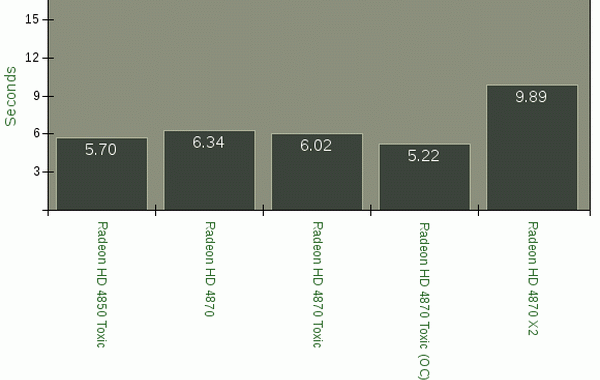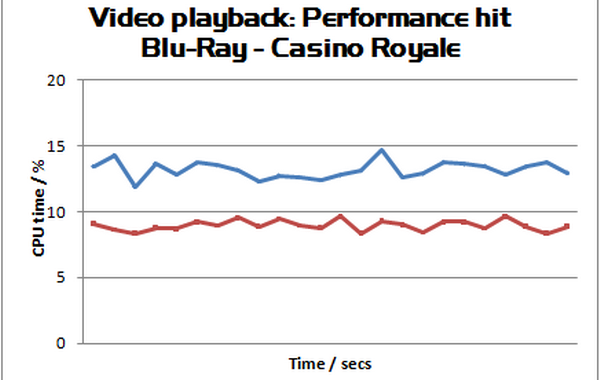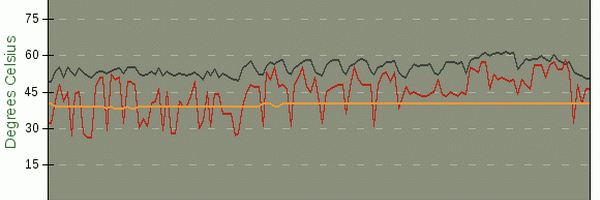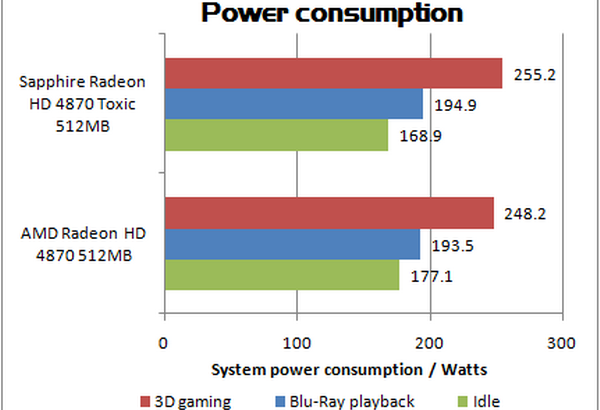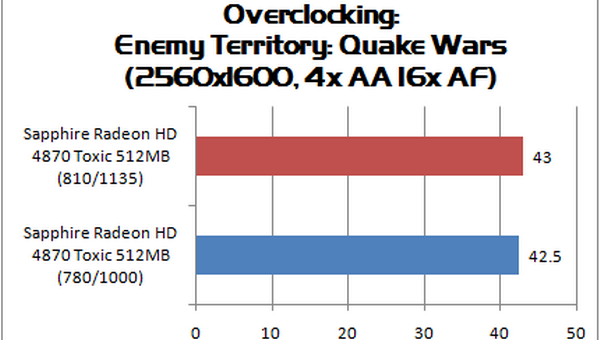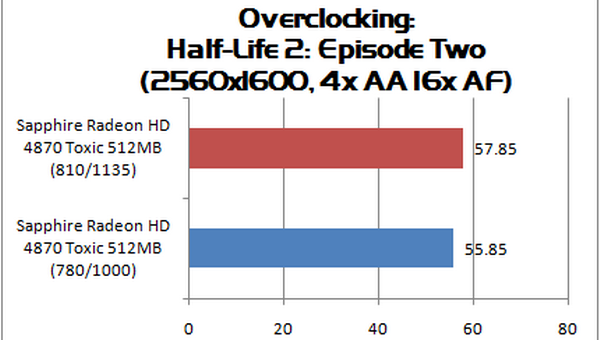Introduction
 I think it’s worth everyone’s wait for Toxic. As far as brandings go, anyway. But Sapphire puts so much effort into general improvements over the stock designs–which they have no small hand in–that I have to wonder if they hold back just to make certain that their Toxic will be that much better.
I think it’s worth everyone’s wait for Toxic. As far as brandings go, anyway. But Sapphire puts so much effort into general improvements over the stock designs–which they have no small hand in–that I have to wonder if they hold back just to make certain that their Toxic will be that much better.
Maybe I’m giving too much away for an intro. Let’s get back to boring stuff, like how HD 4000 changed every possible standard for pricing, and slammed into NVIDIA’s market share so hard that they knocked stock out of ’em. People walking past their offices in California were picking it up on the streets as souvenirs, "I was there when HD 4000 was released!" HD 4870, the flagship, wasn’t a hundred percent, though. It uses a lot of power, and makes a lot of noise. I don’t expect the efficiency to change, but I, and silence enthusiasts everywhere, have been rubbing their hands in wait for Sapphire to throw in their characteristic blue into the equation.
I wish I were saying that the wait was over, but I can’t find these for sale anywhere. But when they’re released, no doubt with an analogous price bump, that they will have been worth the wait.
The Card & Bundle
Sapphire’s been fairly consistent with their Toxic bundle of PowerDVD and DVD editing software, 3DMark Vantage, Ruby ROM (game demos, overclocking and monitoring utilities courtesy AMD) driver disk, and accessories. Not having a game in there isn’t terrific, but it’s not big loss, either. I’m guessing that the card will run $300, and the extra expense of a game is, depending on your budget, either going to be a deal-breaker or just plain unnecessary. And nobody gets a Toxic because it’s got that free copy of Neverwinter Nights 2.
They get it for the heatsink. Previous innovations re: vapor chambers aside, it doesn’t matter how the heatsink is constructed, just that it is both cooler and quieter than whatever reference cooling system no doubt holds back the hardware. This one, with its enclosed, curved, black enclosure sports a thick-looking 80mm fan, three heatpipes, and a wide vapor chamber that spans a third of the card.
The accessories are the default, if not complete: VGA, composite, component, and HDMI adapters, two 6-pin power adapters, a CrossFire bridge, and love.
The card is overclocked, sans flip-switch gimmick, at 780MHz GPU/ 1000MHz memory.
Specifications and Setup
In this review, we’ll be comparing the Sapphire Radeon HD 4870 512MB Toxic to:
- A Palit Radeon HD 4870 Sonic Dual
- A PNY GeForce 9800 GTX 512MB XLR8
- A Sapphire Radeon HD 4850 512MB Toxic
- An EVGA GeForce GTX 260 896MB FTW
Both cards were benched on the same test computer with the same drivers (Catalyst 8.4).
Test Computer Specifications
- Intel Core 2 Duo E8400 3GHz
- Asus Rampage Formula
- 2GB Crucial Ballistix Tracer DDR2 800 @ 4-4-4-12 (Sponsored by Crucial)
- Thermaltake Toughpower 1000 (Sponsored by Thermaltake)
- Windows Vista Ultimate x64 (Sponsored by Microsoft)
Video Card Specifications
Manufacturer’s Website
The SAPPHIRE HD 4870 TOXIC Edition features the award winning – and SAPPHIRE exclusive -Vapor-X cooler, SAPPHIRE’s implementation of Vapor Chamber Technology (VCT). This advanced cooling solution is used for the core logic and together with three heatpipes and thermally controlled fan venting outside the case provides more efficient and quieter cooling than competing solutions for this generation of high performance graphics.
The SAPPHIRE HD 4870 TOXIC edition ships overclocked out of the box for an immediate high performance graphical or gaming experience, and the advanced hybrid cooling solution provides enthusiasts with further scope for performance tuning.
- GDDR5 memory/ 256-bit memory interface
- DirectX 10.1
- 24x custom filter anti-aliasing (CFAA) and high performance anisotropic filtering
- ATI CrossFireX multi-GPU support for highly scalable performance
- Use up to four discrete cards with an AMD 790FX based motherboard
- PCI Express 2.0 support
- Dynamic geometry acceleration
- Game physics processing capability
- ATI Avivo HD video and display technologyUnified Video Decoder 2 (UVD) for Blu-ray and HD VideoBuilt-in HDMI with 7.1 surround sound support
- On-chip HDCP
- ATI PowerPlay technology
- I/O Output: Dual DL-DVI-I+HDTV
- Core Clock: 780 MHz
- Memory Clock: 1000 MHz, 4.0Gbps
- PCI Express 2.0 x16 bus interface
- 512MB /256bit GDDR5 memory interface
- Dual Slot Active Cooler
- HDMI compliant via dongle
- 7.1 Audio Channel Support
- Microsoft DirectX 10.1 support
- Shader Model 4.1 support
DirectX 10 Titles
Performance Notes
The improved clocks don’t do a whole lot for the card, but are an unmistakable improvement. I’m looking at 2FPS improvement at best over a stock HD 4870. Of course, that, under the right circumstance, may mean the difference between 2xAA and 4xAA, but really, it’s just performance insurance.
DX9, OpenGL, and Synthetics
Performance Notes
Here, the Toxic does worse than a lower-clocked 4870, when running synthetic tests. I’m going to chalk this up as a driver issue, since it’s clearly as fast or faster with the video game tests. Not much faster, but damn, those numbers are really good to begin with.
Video, Power, and Overclocking
Like all 4000-series cards, Sapphire’s 4870 excels with video.
I’m surprised that there isn’t any difference with power consumption. Which is a good thing, since the card can only really consume more power. The overclocking doesn’t come out of over-volting, just good silicon binning.
But, like most would have suspected, the clear victory is in noise reduction. Thermals, at stock, temperature-controlled speeds, were easily fifteen degrees cooler than a normal heatsink. Twenty degrees, given the right case and airflow, is doubtlessly possible, as this card didn’t break 65 degrees under load in my testing. The variation in noise tone while the fan’s speed matched the GPU temperature was muted, although the fan was audible at both load and idle. But hang on.
I went ahead and manually set the fan speed to a fixed 25%–I couldn’t hear the difference up to about 35%, but for the sake of setting the fan to its slowest–and the GPU never got past 75 degrees. It was inaudible at such low fan speeds, and still cooler than a stock heatsink by about ten degrees. Definitely worth holding out for.
Not to be content with CCCs defaults, this card has added overhead in Catalyst Control Center’s overclocking page compared to regular 4870s. The card hit the GPU utility ceiling of 820MHz, and I suspect there are 20-30 more under the hood for Riva tuners. The memory hit 1150 MHz, though, which was just awesome. That’s an overall 10% over factory clocks, but an impressive 20% improvement over stock.
Conclusion
When the first 4870s came out, I said their only real competition was other 4870s. This is somewhat less true today, as NVIDIA has effectively countered this series by dropping prices on their GTX 200s. But there’s still very little differentiation among these high-end Radeons. Or at least, there was.
If you’re interested in ATI’s best single-GPU video card, and want a quiet–if not silent–4870, without heat issues or overclocking limits, really now you know what your choice has got to be. However, without pricing set or availability, there’re some variables I can’t account for. The GTX 260 option does lurk, and the question of value will remain until this card hits the mainstream. For everyone’s sake, I hope that it’s soon.
The bundle has the bases covered, the looks of the card are stellar, and almost every other aspect is improved over the initially-released model. Now if only Sapphire would release a 1GB Toxic…


